ASRock Core 100HT Home Theater PC Review
ASRock Core 100HT BIOS
The BIOS on the ASRock Core 100HT is a typical AMI BIOS found on most PCs on the market. But that does not mean there are not a few items worth pointing out on the Core 100HT.
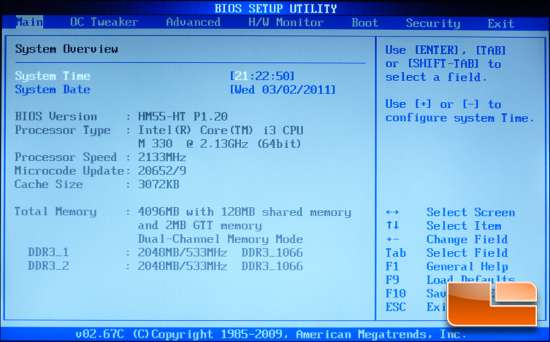
First off, Main tab of the AMI BIOS shows system time and date as well as the standard specs of the processor and memory. We see the Intel Core i3 M 330 CPU is running at 2.13GHz and the memory was defaulted to DDR3 1066. Since we know we have 1333MHz modules inside, we quickly changed that so the memory is running at spec. We also see that 128MB of memory is being shared with the integrated graphics, so we do not have a full 4GB of available memory.
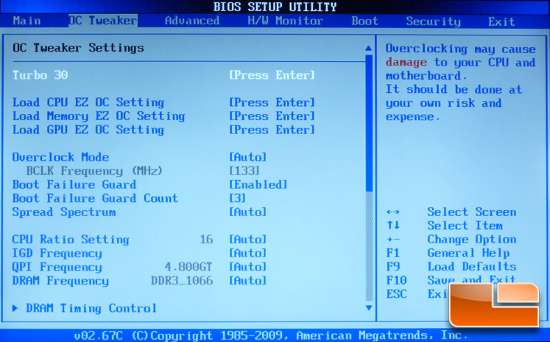
The Core 100HT BIOS includes options to overclock like most systems out there. The Turbo 30 setting allows you to easily overclock the system by preset 25% or 30% performance increases. Alternatively, you can also manually set the frequencies of the CPU, memory and GPU to your desire. Changing the Overclock Mode from Auto to Manual allows your to tweak the frequencies at a granular level. Note there are also settings to manually tweak the DRAM timings. Not bad for a small form-factor/low power HTPC.
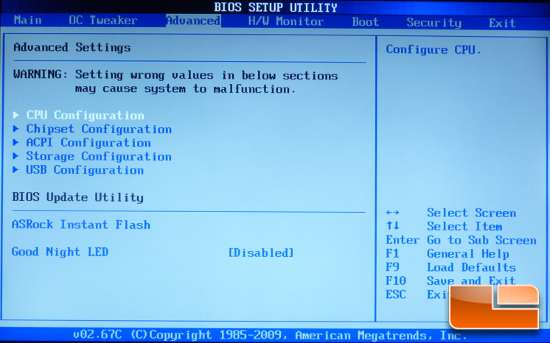
The Advanced tab is also typical for AMI BIOS’s. Here you can enable various Intel Core i features, and change chipset settings like GPU shared memory allocation, audio and LAN settings. The ACPI Configuration menu lets you tweak power saving settings like automatic suspension to RAM and power on LAN. The Storage Configuration menu lets you toggle between IDE legacy mode and native AHCI mode. Finally, the USB Configuration menu allows you to enable and disable USB ports including the USB 3.0 ports.
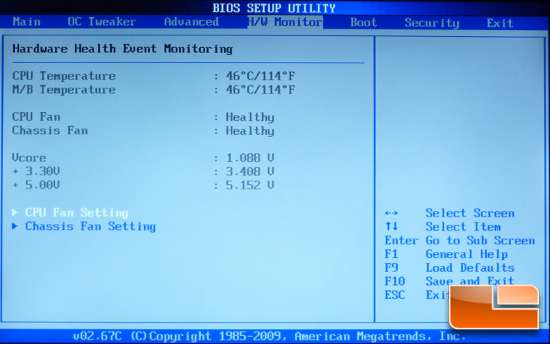
The H/W Monitor tab is also fairly standard in AMI BIOS’s which allow you to check on temperatures, fan performance and settings, as well as the voltages of the CPU, 3.3V and 5V rails.
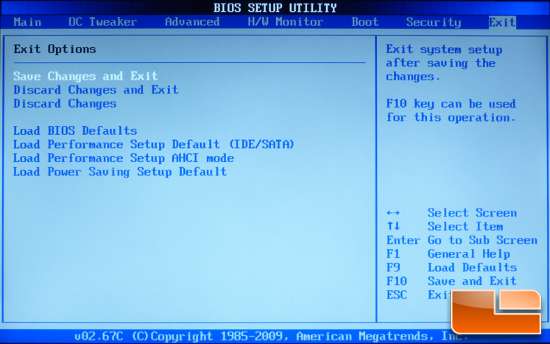
Normally we would not worry about showing the Exit tab because of how standard it really is. But the two separate performance default options caught our attention. ASRock included an option called “Load Performance Setup AHCI mode” in order to make sure you properly set your SATA drives to use the native settings to take advantage of the Native Command Queue (NCQ). We hope to see more BIOS offer this option and eventually omit the IDE mode SATA default altogether.

Comments are closed.